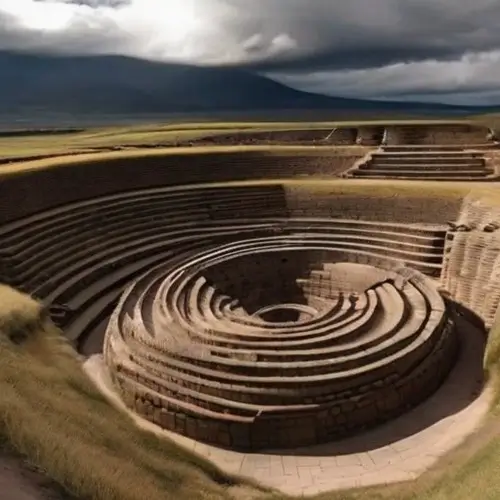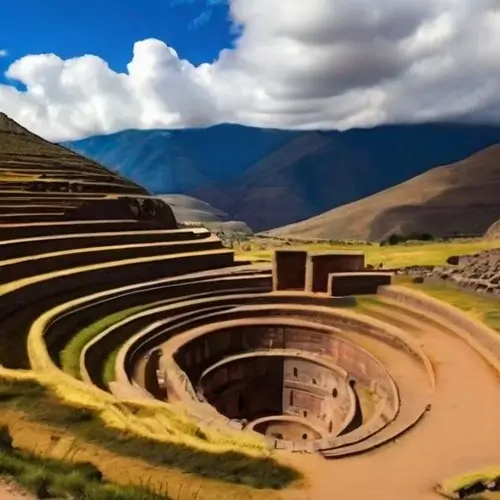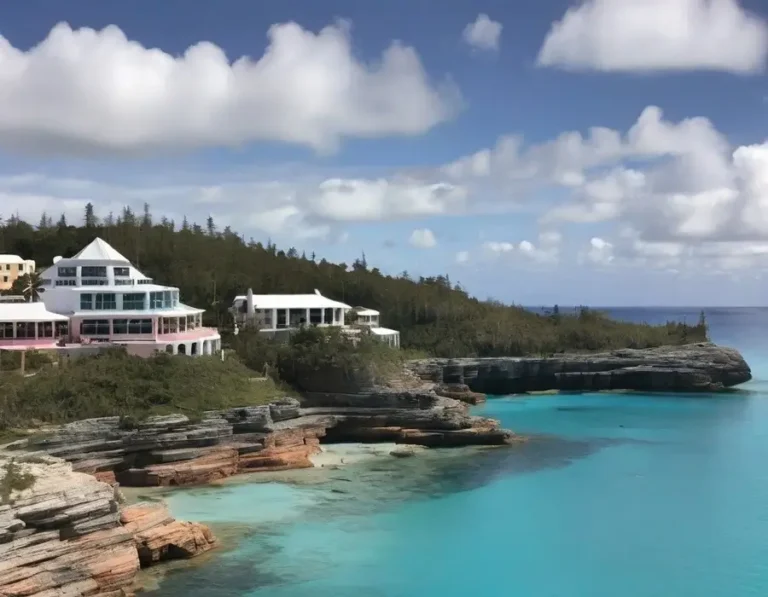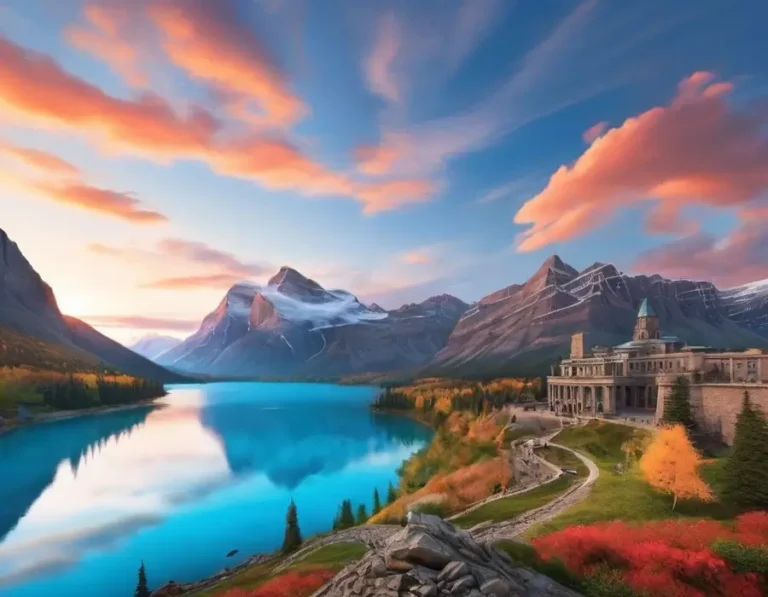Moray Peru: Explore Ruins And Mysteries In The Sacred Valley
The Sacred Valley of Peru holds countless ancient secrets, one of which is the magnificent Moray ruins. Situated high up in the Andes, only 50 km from Cusco, these circular terraced (Moray Peru) depressions carved into the mountains appear almost alien at first glance. As you descend the colossal stone tiers, each having its unique microclimate, questions arise about who built this astronomical structure and for what purpose.
This article will explore the history, architecture, significance, and enduring mystery surrounding the Moray Peru ruins. We’ll analyze the various theories about why it was constructed and the advanced irrigation and temperature modification techniques used at this site.

What is Moray Peru Ruins And Mysteries In The Sacred Valley?
The ancient and mysterious Moray ruins are nested high in Peru’s Sacred Valley. These majestic circular terraces carved into the Andes almost look extraterrestrial in their precise design. As you walk down the colossal stone depressions, with each level hosting its unique microclimate, questions arise about who constructed this site and why.
Definition of Moray
The ruins contain three main terraced hollows, the biggest plunging an awe-inspiring 600 feet across and 150 feet deep. Intricate irrigation conduits feed water to the vast terraces, and each tier has remarkably exact temperature changes – varying over 30 degrees Fahrenheit from top to bottom.
Moray meaning
While theories exist, the real purpose of Moray continues to be unknown. Most experts believe it operated as an Inca crop test site. Yet, as you observe the enormity and complexity of this locale, one thing is sure – Moray brings out wonder, raising more questions than solutions about the capable Inca people.
History and Discovery of Moray
The story of the Moray ruins has been put together from archeology and old stories passed down through generations. While many cultures added to it over centuries, the ingenious Incas were the main builders.
Inca location facts
Digging shows the earliest structures at Moray Cusco Peru were made by the Wari peoples between the 6th and 10th centuries AD. They built the first lower levels. Later, the Incas greatly expanded on these between the 12th and 15th centuries, turning them into what we see now using advanced engineering.
Rediscovered in the 1930s
After the Incas fell, Moray was mainly forgotten by the outside world until modern rediscovery. In 1931, an airplane photography survey showed the vast circular terraces to modern eyes for the first time. This expedition was the first to systematically photo ancient sites from the sky in Peru, bringing places like Moray back after long obscurity.
Incas location facts until the 1970s
While globally unknown, the terraces served local communities after the Incas. The Misminay and nearby townspeople kept growing crops at Moray into the 1970s. After that point, digs and preservation turned it into a major tourist site rather than a farm. Yet Inca descendants still farm the Sacred Valley and celebrate rituals like the yearly Moray Raymi festival to respect their history.
Location and Geography of Peru Ancient Ruins
The marvelous Moray ruins are nestled in Peru’s stunning Sacred Valley, not far from the former Inca capital of Cusco. Surrounded by imposing mountain peaks, they sit high up on a scenic plateau.
Situated in the Sacred Valley
The ruins lay about 50 kilometers (31 miles) northwest of Cusco in the Sacred Valley, which the Incas viewed as a special spiritual place. More precisely, they are found inside the district of Maras and the province of Urubamba. The terraced bowls cover around 36 hectares (89 acres) of dramatic highland plains.

High-altitude plateau terrain
On average, the Moray plateau stands about 11,500 feet (3,500 meters) above sea level. This high elevation provides sweeping vistas of the grand Cordillera mountains that ring the Sacred Valley’s lush farmland below. Steep hills flank the site while it opens out onto flat plains used by modern and ancient cultures for crops. The thin air this high up makes climbing stairs challenging for newly arrived tourists. Yet, experiencing this lofty landscape lets one share a small taste of the hardy lives of Inca farmers.
Layout and Architecture of the Moray Ruins
The design and construction of the Moray ruins showcase innovative engineering that amazes to this day. Consisting of enormous hollowed-out bowls in the plateau, each tier features its irrigation system and mini-climate.
Three main circular depressions
There are three principal giant crater-like formations in Quechua called muyus (circles). The biggest one, Q’echuyoq, has mind-blowing dimensions, spanning about 600 feet wide and plunging 150 feet down into the earth. The second biggest is Simiyoq, while the third is Intiwatana, both slightly smaller but still massive in scale.
Sophisticated terraces and irrigation systems
Inside each hollowed-out muyu, the Incas built sophisticated stacked terraces of precisely aligned stone. The tiers have accompanying stairs and channels that perfectly regulate water flow for irrigation through each level. This kept crops bountiful even at altitudes where most plants struggle. Aqueducts bringing meltwater from distant Andean peaks further fed the site.
Unique microclimates on each terrace
But the genius design feature of Moray is the distinct mini-climates created on separate terraces. Temperatures swing an incredible 30 degrees Fahrenheit from the more relaxed top rings to the scorching bottom rows. Similarly, sunlight differs significantly across tiers depending on the time of day. This allowed Inca agricultural terraces experts to simulate an array of ecological zones found nowhere else in one accessible place, unlocking the secrets of highly adapted crops that fueled the imperial expansion.
Theories on Purpose of Moray Peru
While Moray’s innovative design is straightforward, its exact purpose remains mysterious. Many theories explain why it was built and what happened 500 years ago, from agricultural labs to spiritual epicenters.
Agricultural research center
The most widely accepted idea is that it functioned as a plant testing site, enabling Inca crop cultivation at varying altitudes and climates. This hypothesis is supported by its location, irrigation, terraced layers, and temperature variations. New types of resilient potatoes, corn, and quinoa first grown here would later nourish the mighty empire.
Ceremonial and ritual site
However, some clues hint at more mystical purposes behind Moray. Local lore speaks of it hosting ceremonies even back in Inca times. Its inverted circular shape mirrors their religious symbolism, perhaps tying to beliefs about origins emerging from the underworld. Its remote and mysterious aura suggests spiritual rituals meant to be isolated from ordinary eyes. Descendants today still use it for annual rites that may continue traditions practiced there before the first Europeans arrived.
Ancient astronomical observatory
Linked to spiritual practices, the precise construction suggests it could have analyzed heavenly occurrences. The terraces notably align with solstices, which held significance for Inca sky-watching. Solar and lunar event tracking helped them create an advanced calendar system governing rituals and agriculture. By witnessing cosmic motions from Moray, they mastered planting cycles in complex mountain terrain.
Legendary tales and mysteries
Beyond academic theories, local storytelling presents fantastical explanations for Moray’s appearance. Some describe it as originating from a fiery meteor crashing down from the stars. More improbably, conspiracy theories fancy it the work of extraterrestrials or related to alien aircraft landings! While more grounded interpretations better-fit archeology, the site’s aura seems otherworldly even today, feeding such fabulous myths. Ultimately, Moray retains an enigmatic magnetism that scholars still struggle to unravel completely.
Visiting Moray Ruins Near Cusco
The journey to see Moray yourself is an easy and rewarding Sacred Valley day trip. Only 50 kilometers from Cusco, its location alongside the famous Maras salt mines makes accessing the site convenient.
Accessibility from Cusco and Maras Salt Mines
Many tour agencies offer guided group access to Moray and Maras from Cusco, either by van or bike. You can also take buses towards the Sacred Valley town of Urubamba and get off at the junction, taking a taxi for the last few miles. Entry is right by the large parking lot.
Operating hours and entry fees
The ruins are open daily from 7 AM to 6 PM. To enter, you must purchase a Boletos Turisticos tourist pass for 70 Soles (around USD 20). This gives access to Moray, Maras, and other regional ruins like Pisac or Ollantaytambo.
Best times to visit
Peak visitor periods coincide with the dry season from May to September. Yet the shoulder months before and after offer pleasant weather with fewer crowds. The winter rainy season still enables tours on drier days, just bring waterproof gear!
Conclusion
The magical Moray ruins still capture wonder hundreds of years later. Their huge bowl shapes, fancy waterways, and mini climates show how smart Inca builders were. We may never know their full aim – farm lab, spiritual place, or something else. But one thing is sure: Moray stands out as an excellent masterwork, making us ask big questions about how incredible the Incas were.
So consider the mystery of Moray Peru an open invitation to use your imagination. By taking a trip to walk on ancient steps under tall mountains, you can feel history close up. And who knows – maybe you’ll help uncover more answers! The enigma of Moray calls people to explore open-mindedness and see where the site leads them.



